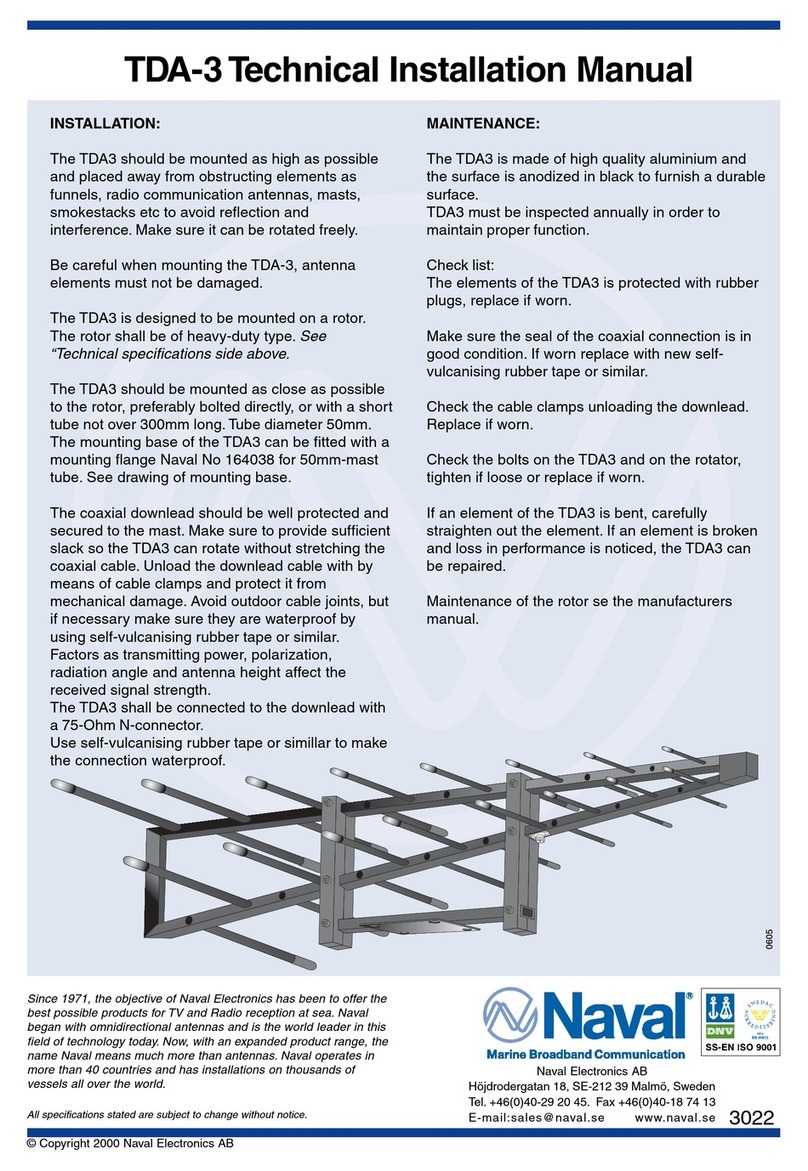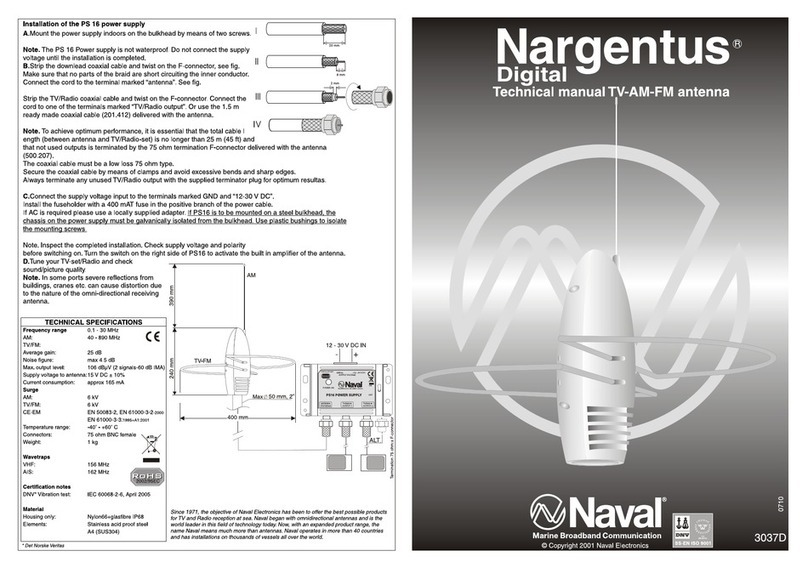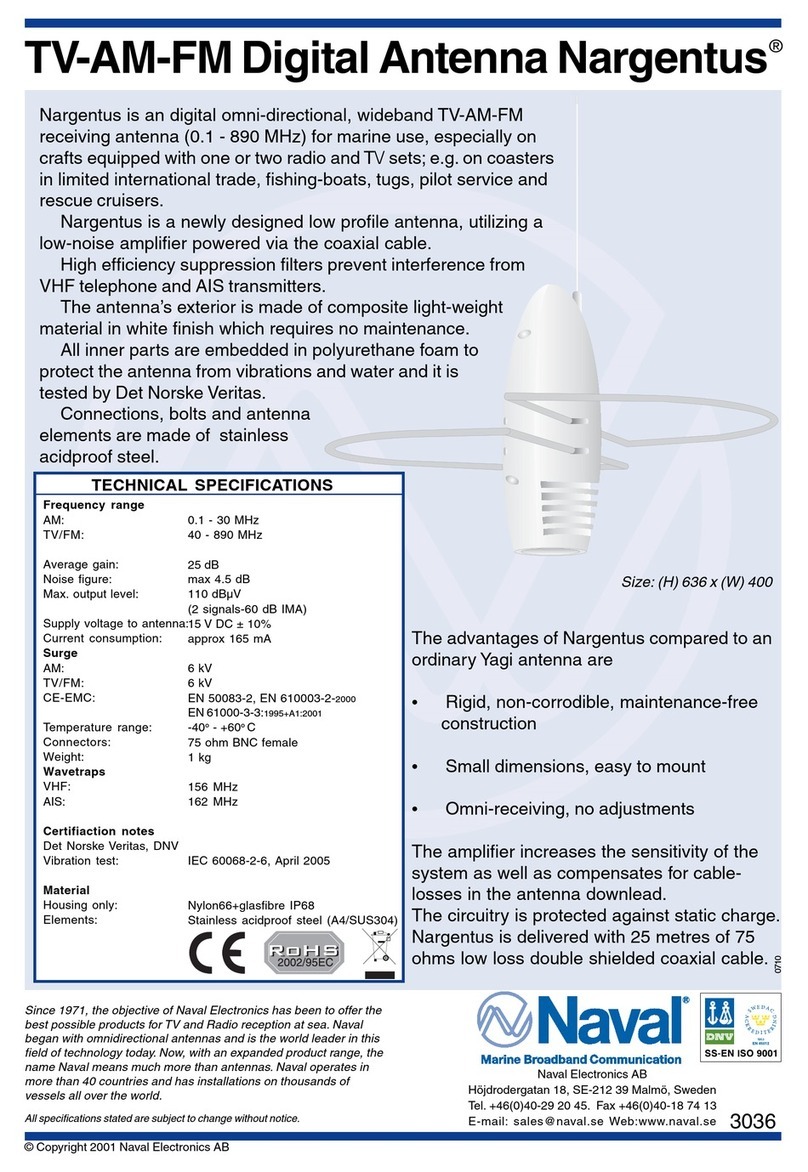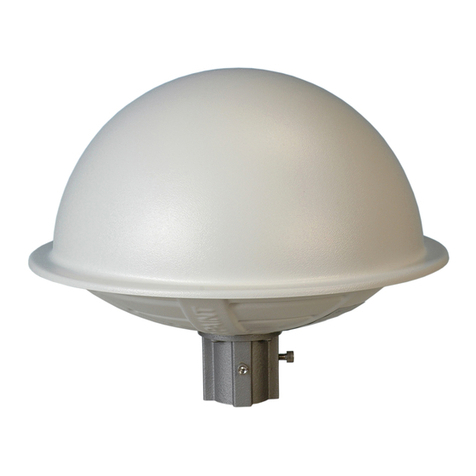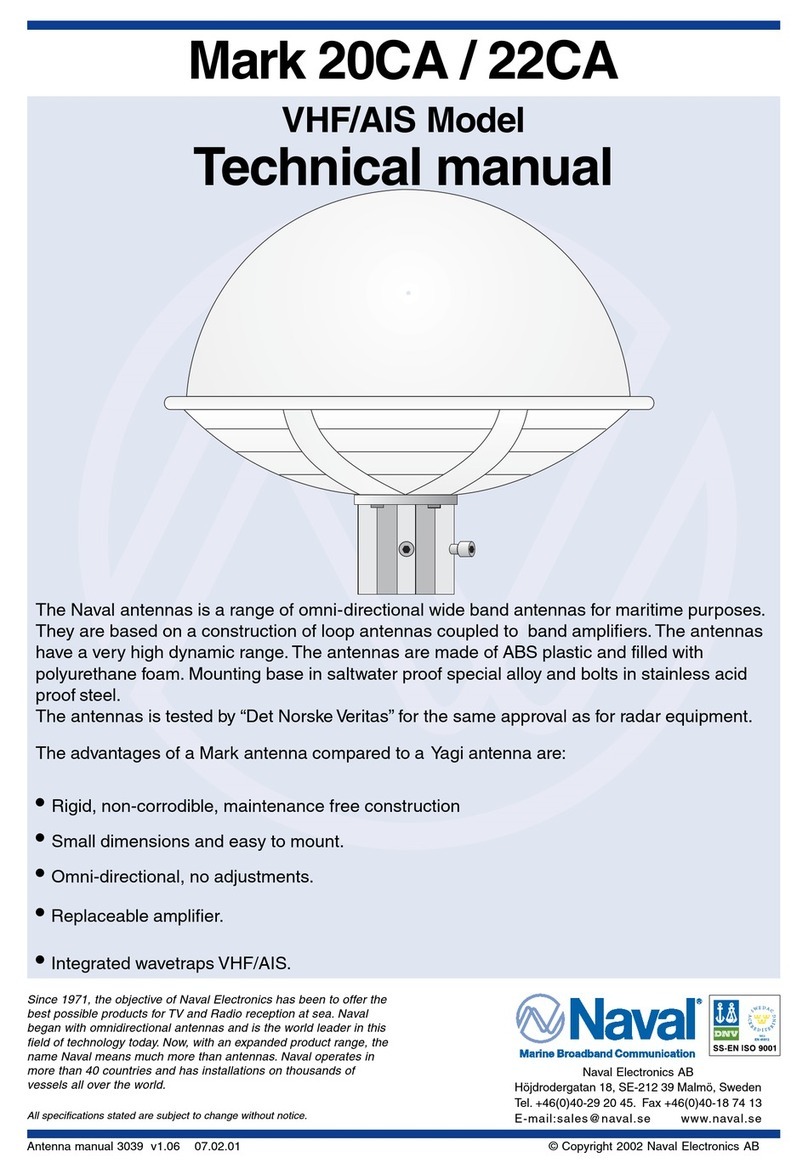
P
PR
R-
-4
42
22
2C
CA
A
M
Ma
ar
ri
in
ne
e
A
AM
M/
/F
FM
M/
/T
TV
V
A
An
nt
te
en
nn
na
a
f
fo
or
r
S
Sh
hi
ip
ps
s
P
P
-
-4
42
20
0C
C
M
Ma
ar
ri
in
ne
e
F
FM
M-
-T
TV
V
n
nt
te
en
nn
na
a
f
fo
or
r
S
Sh
hi
i
s
s
The PR-422CA is an Active Extra High Performance Omni-directional wide-band Terrestrial AM-FM-
TV Antenna ( 0.1-30 and 40-860 MHz) designed for Maritime purposes where second rate efficiency
is unacceptable. Constructed for High End Commercial and Military use, this compact and robust
antenna shell is made of thick UV protected ABS plastic filled with polyurethane foam which
provides both structural support and environmental protection. The mounting base is cast from
Almag Marine Aluminum Alloy which is powder coated and then oven baked. Mounting hardware is
made of acid-proof stainless steel. The Shielded Low Noise Amplifier is protected from static
charges and is removable for field repair or replacement.
Specifications: PR-422CA antenna
Frequency range: PR-422 (0.1-860 MHz), PR-420 (40-860 MHz)
Average VHF gain: 25 dB (amp)
Average UHF gain: tilt 16-20 dB (amp)
VHF Noise figure: 3.0 dB (amp)
UHF Noise figure: 2.5 dB (amp)
Max output level: 111 dBuV min (2 signals-60 dBIM)
Third order intermod products: >20dB IP3
Antenna factor: Ka = 0.12 AM
Filters: Band pass 100 KHz- 30 MHz., 47-108 MHz.,
174-230 MHz.,470-860 MHz.
Broadband rejection filter: 140-165 MHz.
Polarization: horizontal
Antenna pattern: omni-directional
Supply voltage to antenna: 15VDC nominal
Current consumption: 130 mA Nominal
Operating temperature: -40 to +55 C.
Protection circuits: static discharge device fires at 65 volts
Impedance: 75 ohm nominal
Connector "F" type Gold electroplate or BNC-75
Return loss: >10dB with optional output connector.
Radome material: UV protected ABS
Flange material: Stainless, Almag or Powder Coated Almag
Internal stabilization material: Polyurethane foam injection
Element material: copper foil
Element type: three looped dipoles with Z match pcb
Shipping Weight: 12-13 lbs with 1 ft coax and aluminum flange
Shipping container dim : 19 x 19 x 16 inches
The PR-422CA is based on a construction of 3 circular dipoles coupled to a low noise amplifier via a
broadband filter network. Maximum performance is assured through the extensive use of a Network
Analyzer in the initial design and in the final construction and tuning of each unit. Microwave
transistors provide needed gain with a minimum of internally generated noise. Careful engineering
and the use of very high quality components yields excellent intermod performance and sharp hand
tuned filters greatly reduce the chance of interference from outside of the TV bands
The PR-422CA is at the head of a new 4000 Series Marine Cassette Amplifier System with
distribution passives introduced in 1998. The Series 4000 is the result of painstaking engineering
and the use of state of the art components such as high performance GaAs Heterojunction Bipolar
Transistors.
PR- 420CA is identical with the omission of AM-SW radio rece
tion.












